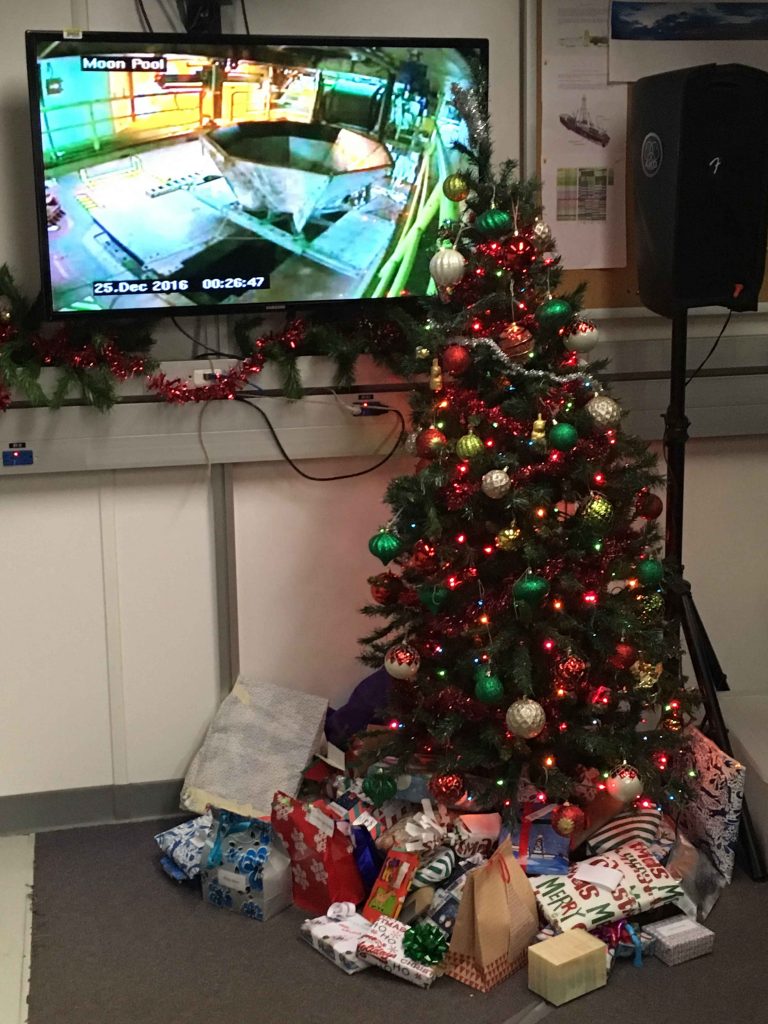
The Lull Before Asut-Tesoru…
It’s been a rather quiet couple days here on the JR, as the drillers have been diligently drilling what will ultimately become a 200 m cased drill hole with an ROV landing pad on top, for future instrumentation and use as a venue for real-time measurements of the unusual upwelling fluids we encountered at Yinazao Seamount.
During this period there have been no cores to examine, or whole-rounds for the geochemists to squeeze or the microbiologists to chop up and preserve, so we’ve filled the time in Geochemistry with making measurements on the nearly seventy porefluid samples we collected, with three of our lab’s instruments: the Ion Chromatograph, the UV-Visible Spectrometer, and the ICP-Optical Emission Spectrometer; all running simultaneously to collect data on key anions and cations. We’re also preparing a number of rock and serpentinite mud samples for elemental analysis, a multi-day process that also involves replacing tubing and glassware in the ICP – so from that perspective it’s good to have the down-time, though this mostly keeps the IODP Technicians busy as opposed to the scientists.
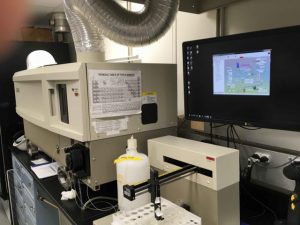
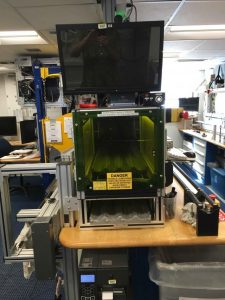
We’ve also used the time to solve some problems in ways that could only be done on a ship like this. We turned out to be short of filter paper rounds of the correct diameter to serve as backing for the sample powder mounts we use to conduct portable X-ray fluorescence spectrometer measurements on powdered samples. Solution: program the Laser Engraver (normally used to label incoming cores) to cut bigger ones down to size! It was quick to do, so we now have a very generous supply of small-diameter filter rounds.
Our lull in the action (probably fortunately) intersected with Christmas, so the science team and the crew could relax a bit and try and enjoy the holiday, here at sea far from home. As there have been others blogging (in several languages and with video!) on the JR’s Christmas festivities, I’m going to try not to repeat what you’ve seen before in other posts (and if you haven’t – you should look!). I will note here for the record that Christmas songs were sung in English, French, Chinese, Japanese, Korean, Portuguese, Hawaiian, and Tagalog; that (electric) bagpipes were played to a rousing ovation; that Santa (looking suspiciously like a Co-Chief Scientist) arrived with a reindeer (who looked suspiciously like the other Co-Chief Scientist), and with the help of two very large elves (plucked from the Serpentinite Choir, which had regaled the room with both traditional and contemporary holiday selections), distributed gifts (ostensibly valued at no more than $10) to the assembled, all of whom had anonymously contributed presents to this bounty. I received a potentially very useful multi-purpose pocket tool (pliers, wirecutter, pocketknife,screwdrivers, nailfile, wood saw, corkscrew!) which I’ll have to figure out how to get past TSA in February when I go home. Our Entier stewards and galley staff outdid themselves with both a lunchtime barbecue, AND an excellent holiday dinner, including a full sushi bar and several freshly baked cakes – and they kindly served it twice for the benefit of us night-shift types!

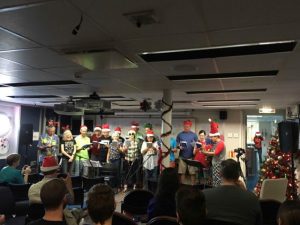
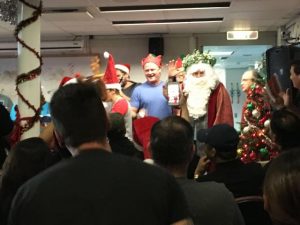
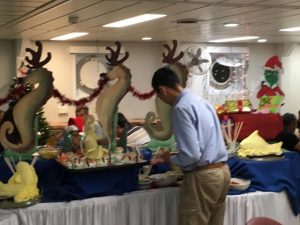
Shortly our lull-in-the-action will end, and we’ll sail northward to Asut-Tesoru (formerly Big Blue) Seamount to conduct an extensive campaign of coring at four different sites on its flanks and summit, followed by another lull for drilling a second to-be-instrumented cased hole. I’m looking ahead to this with a little bit of trepidation, because while Yinazao was at times frenetic in the lab, Asut-Tesoru could be worse – and it all relates to the drilling, or more specifically, to the depths we’re drilling from. At Yinazao, which was ?3600 meters below the surface, getting an APC sample core to the surface was a ~40 minute proposition, with another 40 minutes or so to get the corecatcher back down for the next one. This gave us time to get cores processed and started squeezing without a whole lot of backlog. At Asut-Tesoru, water depths are going to be as little as 1/3 of this value – which means that core will get to us potentially three times faster than it did at Yinazao! That’ll mean a lot more “Core on Deck” calls in a shift, and much less time to get processing done before new materials arrive to be dealt with in the lab. If all goes well, Geochemistry will be very backlogged the whole time at Asut-Tesoru – good for our science goals, but potentially crazy-making as a day-to-day thing! Hopefully, it all rolls smoothly when we finally pull up stakes here.